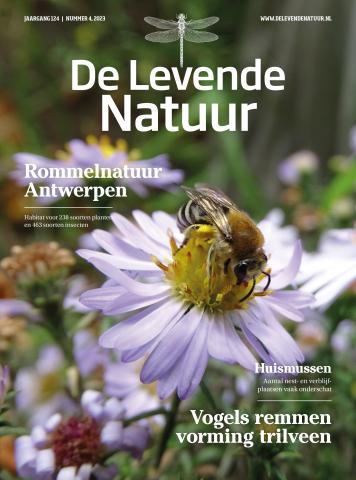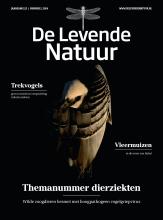De Levende Natuur nummer 4 van 2023 (English summary)
Afbeelding

Urban nature of biological value
Nature and biodiversity are key themes within sustainable urban development. But which factors determine the biological value of urban green spaces? This study describes the results of a two-year insect inventory of a green space in Antwerp (Belgium). This urban green space is considered of low biological value, because of its ’messy’ appearance and the presence of many exotic plant species as relicts of its former function as recreational gardens and allotments. The native herbaceous vegetation consists mainly of common ruderal species. The green enclave nevertheless harboured a highly diverse and interesting insect community, showing that neglected urban spots, composed of a mixture of native and non-native plant species, can be of biological value.
Liming of fens
The quality of floating fens, Cirsio dissecti-Molinietum fen meadows, poor fens and Calthion palustris hay meadows in fen areas in the Netherlands is threatened by acidification. In the past several experiments have been performed to examine whether liming can mitigate the negative effects of acidification in these vegetation types. Earlier experiments however did not result in a general advise concerning liming of fen areas. In this research a field study was conducted to evaluate liming as a restoration measure for the forementioned fen and meadow types in the Netherlands. We found that Calthion palustris hay meadows, due to temporary positive effects, can benefit from liming. But this only works when performed regularly. In nutrient-poor fen systems positive effects of liming were minor and involved risks. For floating fens and Cirsio dissecti-Molinietum-fen meadows, there was too little information to draw conclusions on the effect of liming.
Bird grazing hampers development of floating-fens
Floating fens are one of the most species rich and most treathened habitats in Europe. Existing floating fens usually decline in species diversity over time due to succession and acidification. New floating fens are urgently needed, but in the Netherlands these have hardly developed in recent decades. Previous research indicated that grazing by waterfowl can hamper the development of floating-fens in open water. This research estimated the actual amount of grazed biomass using camera-traps. The grazed biomass turned out to be in the same order of magnitude as the standing biomass, showing that even a relatively low grazing pressure by waterfowl (mute swan and common coot) can impact floating fens. Large exclosures (12x50 m) showed that floating fens quickly expanded in the abscence of grazing, whereas outside the exclosures the development of vegetation came to a standstill due to grazing by waterfowl. We expect that in peat lakes with a size of around 1 ha, with suitable abiotic conditions, within exclosures new floating fens can develop with a few meters per annum. Thus we estimate that after 5 to 10 years the open water will have disappeared, after which the exclosures can be removed.


